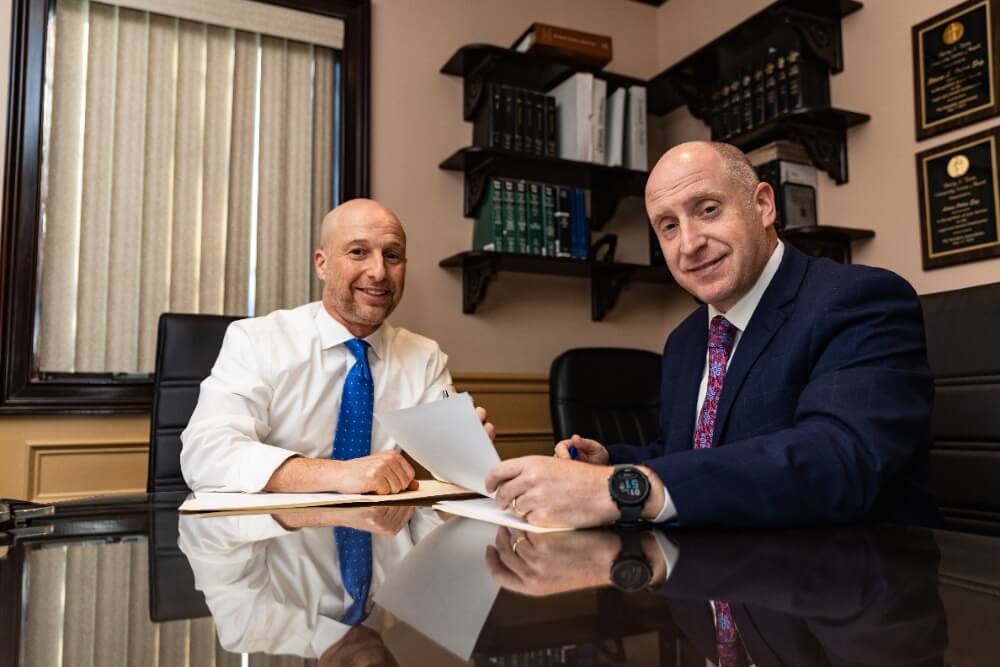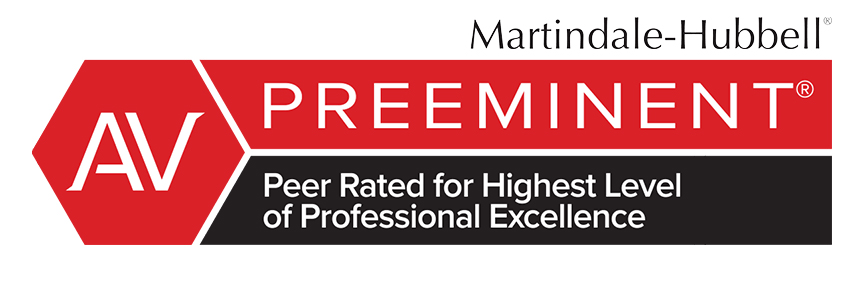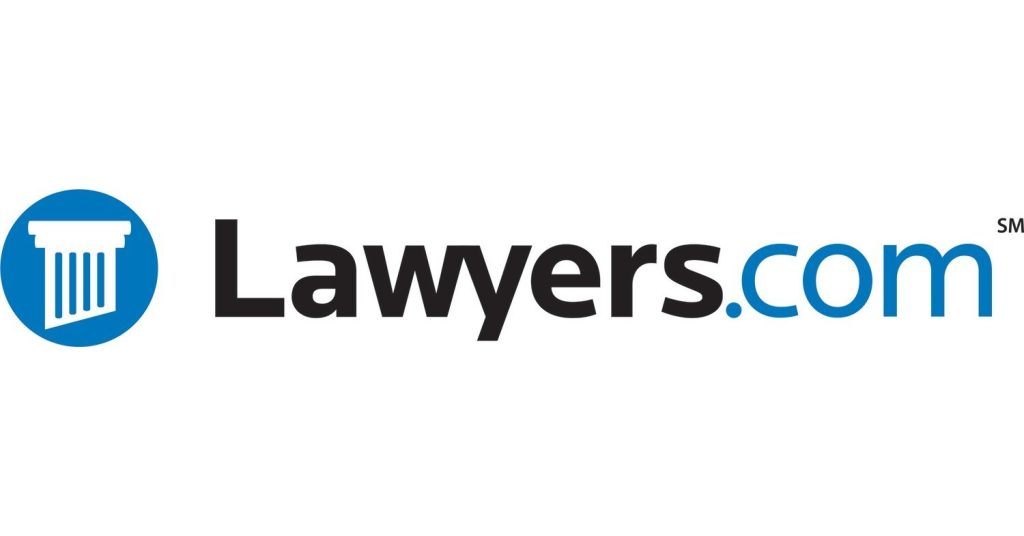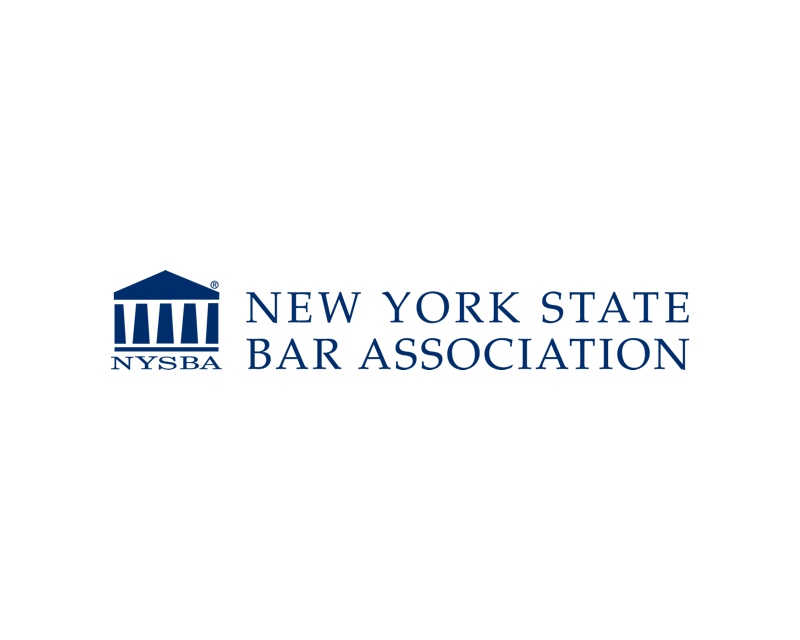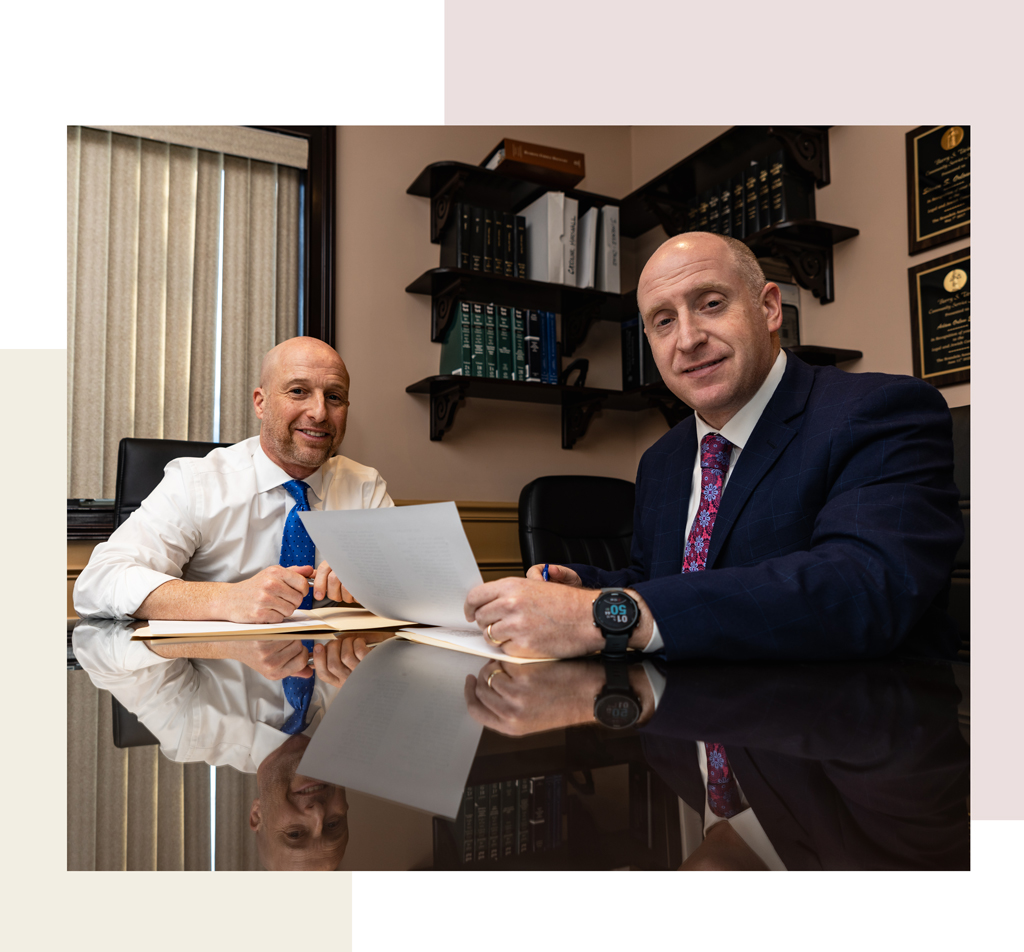Experienced Personal Injury Lawyers in The Bronx
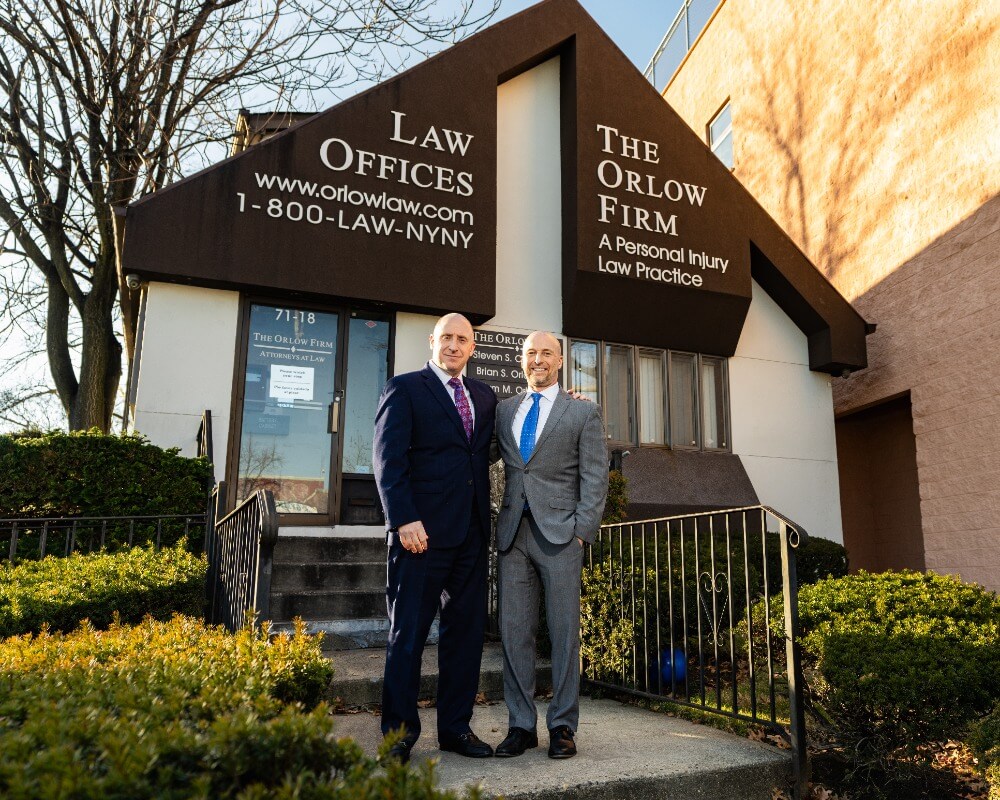
At The Orlow Firm, our Bronx Personal Injury Lawyers work hard to protect your rights. If you have been injured in the Bronx due to an accident or negligence, our attorneys are here for you. We understand the stress that comes with injuries from car accidents, slip-and-falls, or work-related incidents. Our team knows the local area, traffic challenges, and court systems that affect personal injury claims in the Bronx.
We provide clear guidance and strong representation at every step. Our approach is compassionate and thorough, ensuring your case is handled with care and commitment. We work to help you get the compensation you deserve during this difficult time.
If you need reliable legal help in the Bronx, contact us for a free case evaluation. Call today at (646) 647-3398.
Why Choose Us for Your Personal Injury Claim
When you are injured in the Bronx, you need a team that understands your unique challenges. At The Orlow Firm, we are committed to fighting for your rights with compassion and clear guidance. Our attorneys know Bronx traffic, local court systems, and New York personal injury laws, which helps us build strong cases for our clients.
Below are some of the reasons why Bronx residents trust us with their personal injury claims:
- Local Knowledge: We understand the Bronx’s streets, medical providers, and court systems, which gives us an edge when handling your case.
- Personalized Attention: We treat every client with care and respect, ensuring your story is heard and your needs are met.
- No Upfront Fees: We work on a contingency fee basis, so you pay nothing unless we win your claim.
- Proven Results: Our record in securing fair settlements and verdicts shows our commitment to your recovery.
- Client-Focused Advocacy: We handle all aspects of your case, allowing you to concentrate on healing without added stress.
Choosing the right lawyer is a crucial step in your journey to recovery. Let our dedicated Bronx personal injury attorneys fight for the fair compensation you deserve. Contact us today for a free consultation by calling (646) 647-3398.
Types of Personal Injury Cases We Handle
When you are injured in the Bronx due to someone else’s negligence, you need legal help that understands local challenges. Our firm handles a wide range of personal injury cases in the Bronx. We know that the busy streets, heavy traffic, and diverse neighborhoods present unique risks. Whether you were hurt on a busy Bronx avenue or at a local construction site, we are ready to help you pursue fair compensation.
Below are some of the types of personal injury cases we handle:
- Car Accidents: Cases involving collisions on Bronx streets, including accidents with taxis, rideshares, and commercial vehicles.
- Pedestrian Accidents: Incidents where pedestrians are injured due to negligent drivers or unsafe crosswalks in the Bronx.
- Slip-and-Fall Accidents: Claims for injuries that occur on public sidewalks, in stores, or on private property with unsafe conditions.
- Construction Accidents: Claims for workers or bystanders injured at or near construction sites, where proper safety measures were not followed.
- Premises Liability: Cases where property owners fail to maintain safe facilities, leading to injuries in commercial or residential areas.
- Medical Malpractice: Claims for patients harmed by the negligence of healthcare providers or hospitals in the Bronx.
- Workplace Injuries: Cases involving injuries sustained on the job, including those involving industrial accidents and harmful working conditions.
Our Bronx personal injury cases cover a diverse range of incidents. If you have been injured due to another party’s negligence, our dedicated team is here to assist you. Contact us today for a free case evaluation and let us help you get the compensation you deserve. Call (646) 647-3398 now.
Proven Results for Injured People
At The Orlow Firm, our Bronx personal injury results speak volumes. We have recovered millions of dollars for clients injured across New York, including many in the Bronx. We work hard to secure fair compensation for your losses and suffering. Below are examples of our successful outcomes in personal injury cases:
- $3.375 million: For a construction worker who fell 12’ off a ladder. He injured his neck, back, elbow, and shoulder, with both his neck and back requiring surgery.
- $2.6 million: For an HVAC laborer injured when a drop ceiling fell on his head, causing injuries to his back, knees, and shoulder.
- $2.875 million: In a premises liability case for a legally blind man who fell 16 feet into an open elevator shaft, resulting in back and heel injuries.
- $1.5 million: For a client who fell due to a badly damaged sidewalk. Her fall caused back and ankle injuries that required surgery.
- $900,000: For a painter injured in a scaffold accident, who suffered injuries that necessitated surgical repair.
These cases represent our commitment to fighting for justice and maximum compensation for injured people. If you have been hurt in the Bronx, let us help you too. Contact The Orlow Firm today for a free consultation at (646) 647-3398.
New York Laws and Regulations Affecting Personal Injury Claims
New York personal injury law has strict rules that protect both injured victims and those who may be partly at fault. The state’s comparative negligence rule means that if you share some responsibility for the accident, your compensation may be reduced. Other regulations detail the proper collection of evidence, such as medical records, accident reports, and witness statements. Bronx personal injury lawyers know these requirements well and use this knowledge to build strong cases for clients.
New York law also sets specific deadlines for filing claims. Generally, you have three years to file a personal injury lawsuit. In cases against public entities, the deadline may be shorter. This makes it crucial to act quickly after an injury. Familiarity with New York traffic laws and local court systems in the Bronx can also play a significant role in navigating your case effectively.
Staying informed about New York laws and regulations is vital to securing the compensation you deserve. Our legal team carefully reviews every detail to ensure all legal standards are met in your personal injury claim. If you have questions or need help understanding how these laws impact your claim, please contact us today for a free case evaluation. Call us at (646) 647-3398.
Common Causes of Personal Injury Incidents
In the Bronx, several factors contribute to personal injury incidents. Busy streets, heavy traffic, and a mix of urban and construction environments can lead to accidents. Understanding these common causes can help injured victims know when to seek legal guidance.
Below is a list of common causes of personal injury incidents:
- Motor Vehicle Accidents: Incidents involving cars, taxis, or commercial vehicles are frequent in the Bronx due to heavy traffic and aggressive driving conditions.
- Pedestrian and Bicycle Accidents: Dense urban areas and busy intersections often lead to accidents involving pedestrians and cyclists.
- Slip and Fall Incidents: Poorly maintained sidewalks, uneven surfaces, and icy conditions can result in serious injuries from falls.
- Construction Zone Incidents: With ongoing building projects and renovations, the Bronx sees injuries caused by unsafe construction sites or falling debris.
- Premises Liability: Property owners may be negligent in maintaining safe conditions, leading to accidents in commercial and residential areas.
If you have been injured due to any of these common causes, our team is here to help you understand your legal options and secure the compensation you may be entitled to. Contact us today for a free consultation at (646) 647-3398.
Common Injuries in Personal Injury Cases
Common injuries from accidents in the Bronx can be both physical and emotional. These injuries may result from car collisions, slip-and-fall incidents, workplace accidents, and construction mishaps. Often, victims face not only medical issues but also painful emotional distress. Our legal team understands the challenges you may face and is ready to help you obtain the compensation you deserve.
Below is a list of common injuries seen in Bronx personal injury cases:
We have compiled a list of frequently observed injuries in our practice. This list is not exhaustive, but it shows the types of injuries that often require long-term medical care and support.
- Traumatic Brain Injuries: Head injuries such as concussions, skull fractures, or internal bleeding that may require intensive treatment.
- Spinal Cord Injuries: Damage to the spine that can cause chronic pain, reduced mobility, or even paralysis.
- Fractured or Broken Bones: Injuries from vehicle accidents or falls that can lead to prolonged recovery and sometimes surgery.
- Soft-Tissue Injuries: Sprains, strains, and bruising that result from sudden impacts and accidents.
- Burn Injuries: Burns originating from fire, electrical incidents, or chemical exposure that may need extensive medical care.
- Internal Injuries: Damage to internal organs that can be life-threatening and often require detailed medical evaluation.
- Psychological Injuries: Emotional distress and conditions such as PTSD, depression, and anxiety resulting from traumatic events.
If you or a loved one suffers from any of these injuries, it is important to secure prompt medical care and careful legal evaluation. Contact our office today for a free consultation. Let our Bronx personal injury lawyers help you protect your rights and move on toward recovery. Call now at (646) 647-3398.
Steps to Take After a Personal Injury Incident in The Bronx
If you are injured in the Bronx due to someone else’s negligence, it is important to act quickly. Taking the right steps can help protect your rights and preserve evidence for your case. Follow these steps to ensure you are in the strongest position possible:
- Seek Medical Attention: Even if your injuries seem minor, visit a hospital or urgent care center right away. Many injuries reveal themselves only after some time.
- Document the Scene: Take clear photos or videos of the accident scene, any visible injuries, and any dangerous conditions that contributed to the incident. This is key evidence for your claim.
- Report the Incident: Contact local law enforcement and file a report if necessary. A police report from a Bronx precinct can add credibility to your case.
- Gather Witness Information: Collect names and contact information of those who saw the incident. Their statements may prove vital in building your claim.
- Avoid Social Media Posts: Refrain from discussing details about the incident on social media or with insurance adjusters without first speaking to an attorney.
- Contact a Bronx Personal Injury Lawyer: Call a lawyer to help you review your case immediately. An experienced attorney will guide you through the process, help gather essential evidence, and protect your legal rights.
Taking these steps soon after an accident in the Bronx can make a significant difference in your personal injury claim. For a free case evaluation, please contact us at (646) 647-3398.
Establishing Liability in Personal Injury Cases
Establishing liability is crucial in a personal injury case. In Bronx cases, showing that another party’s negligence caused your injuries is key. Liability means proving that someone failed to act as a reasonable person would, which led directly to your harm.
Our attorneys work with you to gather critical evidence. This evidence helps tie the negligent actions to your injuries. We review accident reports, medical records, surveillance footage, and relevant court documents. In many cases, establishing liability relies on proving these four key elements:
- Negligence: Demonstrating that the responsible party breached a duty of care.
- Foreseeability: Showing that the harm was a predictable result of that breach.
- Causation: Proving that the breach directly caused your injuries.
- Damages: Documenting your losses, such as medical bills and lost wages.
Our legal team is familiar with Bronx traffic patterns and local court rules, which can affect your claim. With a detailed review of the facts, we build a strong case by linking evidence directly to the responsible party’s actions.
If you need help establishing liability in a personal injury case, please contact The Orlow Firm. We will review every detail of your situation and guide you through the process. Call us today for a free case evaluation at (646) 647-3398.
Damages You Can Recover
When you file a personal injury claim in the Bronx, you may be entitled to a range of damages. These damages are meant to help cover both financial losses and personal hardships. Selecting the right Bronx personal injury lawyer can make a difference in ensuring you receive all the compensation you deserve.
Below are common types of damages you may recover:
- Medical Expenses: Compensation for hospital bills, surgeries, medications, and rehabilitation costs.
- Lost Wages: Reimbursement for income lost while you recover. This may also include future earnings if your ability to work is affected.
- Pain and Suffering: Financial relief for the physical pain, emotional distress, and mental anguish caused by your injuries.
- Property Damage: Coverage for repairs or replacement of damaged property, such as your vehicle or personal belongings.
- Loss of Quality of Life: Damages for the reduced enjoyment in life due to ongoing pain or physical limitations.
Every personal injury case is unique. Local factors, such as Bronx traffic, infrastructure challenges, and court systems, all play a role when determining available compensation. Our legal team carefully evaluates your losses so no potential damage is overlooked.
If you have been injured in the Bronx, contact us for a free consultation at (646) 647-3398. We are here to help you understand your options and fight for the full compensation you deserve.
How We Maximize Compensation for Personal Injury Victims
We work hard to help our Bronx clients recover the full compensation they deserve. Our team uses a thorough and compassionate approach that looks at every detail of your case. We understand that accidents in busy boroughs like the Bronx can have long-lasting effects on your health and finances. That is why we leave no stone unturned when building your personal injury claim.
Our process begins with a detailed review of your medical records, lost wages, and any additional financial burdens. We then gather all the necessary evidence and work closely with local experts. Our goal is to show the full extent of your damages and the impact the injury has on your life. In the Bronx, where local conditions such as heavy traffic and varied neighborhoods can complicate claims, our local knowledge proves vital.
Here are the key elements of our strategy to maximize compensation:
- Thorough Investigation: We collect all available evidence, including accident reports, witness statements, and medical records, to build a strong case.
- Accurate Damage Calculations: We assess your economic losses and noneconomic damages such as pain and suffering, future care needs, and loss of quality of life.
- Local experience: Our deep understanding of Bronx-specific issues helps us identify all forms of compensation available under New York law.
- Skilled Negotiation: We handle all settlement discussions with insurance companies, fighting to secure a fair settlement that reflects your true losses.
- Litigation Preparedness: If a fair settlement is not reached, we are fully prepared to take your case to trial to pursue the maximum recovery possible.
We combine these elements with a commitment to clear and constant communication with you. This means you are informed every step of the way, and we use our Bronx local insights to tailor your claim. We are dedicated to ensuring that every factor impacting your recovery is fully considered.
Call us today for a free case evaluation at (646) 647-3398 and let our Bronx personal injury lawyers help you secure the compensation you may be entitled to.
Statute of Limitations and Deadlines in New York
In New York, deadlines for filing personal injury claims are strict. These time limits can greatly affect your case. As a Bronx personal injury lawyer, we understand that accidents rarely follow a set schedule. The statute of limitations starts on the day you are injured. Missing a deadline may cause you to lose your right to seek compensation.
Below are key points to consider regarding deadlines in personal injury cases:
- Personal Injury Claims: In most cases, you have three years from the date of your injury to file a lawsuit.
- Government or Public Entity Claims: Claims against the city or a public entity often require notice within 90 days, and the lawsuit must be filed within a shorter time frame.
- Special Circumstances: Cases involving minors or individuals with certain disabilities may have different deadlines.
It is important to act quickly after your injury. Every day counts when protecting your legal rights. Do not delay in getting the help you need. If you have been injured in the Bronx, contact our team immediately to ensure your claim is filed within the proper deadline. Call us today for a free case evaluation at (646) 647-3398.
Local Resources in The Bronx
If you have been injured in the Bronx, knowing where to turn for essential support can be a critical part of your recovery. Below is a list of valuable local resources that may assist you with medical care, safety, legal needs, and community support.
- Hospitals and Medical Facilities: Facilities like Montefiore Medical Center provide advanced trauma and emergency care. Visit Website
- BronxCare Health System: A network of hospitals and clinics offering comprehensive healthcare services for Bronx residents. Visit Website
- Police and Emergency Services: The NYPD and FDNY are available for emergency response and incident reporting. For more information on local precinct services, Visit Website
- Courthouses and Legal Centers: The Bronx County Courthouse handles local legal proceedings and civil matters. Visit Website
- Public Transportation: The MTA offers extensive bus and subway services throughout the Bronx, helping you get to appointments and other essential destinations. Visit Website
- Community and Support Services: Local organizations, such as the YMCA of the Bronx and BronxWorks, provide additional support during times of need. Visit Website
These resources are designed to help Bronx residents navigate the challenges that follow an injury. If you need legal advice or help to secure the compensation you may be entitled to, please do not hesitate to contact our office for a free case evaluation. Get in touch today at (646) 647-3398.
Frequently Asked Questions
Below are answers to some common questions we receive from Bronx residents regarding personal injury claims. Our goal is to help you better understand your rights and the legal process.
- How long do I have to file a claim?: New York law generally allows three years from the date of your injury. Cases against government entities may have shorter deadlines, so timely legal advice is essential.
- Will fault affect my compensation?: New York’s comparative negligence rule means you can still recover damages even if you were partly at fault. However, your compensation may be reduced by your percentage of fault.
- Do I pay any fees upfront?: No. We work on a contingency fee basis, so you pay nothing unless we win your case.
- What types of damages can I recover?: You may be eligible for compensation that covers medical expenses, lost wages, pain and suffering, and other losses related to your injury.
- How long will my case take to resolve?: Each case is unique. Simpler cases may settle swiftly, while more complex cases might take longer. We work to resolve your claim as efficiently as possible.
- Do I really need a personal injury lawyer?: While you can file a claim on your own, working with a lawyer can protect your rights. Insurance companies often try to minimize payouts, so having legal counsel can make a significant difference.
- What should I do immediately after an accident?: Seek medical treatment right away, document your injuries and the scene, and avoid speaking with insurance companies before consulting an attorney.
If you have further questions or need immediate assistance with your Bronx personal injury claim, please get in touch with our legal team. Contact us today for a free consultation at (646) 647-3398.
Contact Us for a Free Consultation
We know that your recovery and peace of mind matter. If you have been injured in the Bronx, our team is ready to listen and help. We offer a free consultation with no cost or obligation. Our attorneys understand the challenges you face, from navigating busy NYC traffic to dealing with local court systems.
Your case is unique. We review every detail carefully to protect your rights and pursue maximum compensation. When you call us, you get a personal, compassionate approach right from the start.
Our process is simple:
- Free Consultation: We meet with you at no cost to discuss your case and answer your questions.
- Individualized Support: We listen to your story and work on a plan that fits your needs.
- No Upfront Fees: You pay nothing unless we recover compensation for you.
Take the first step towards securing the support and justice you deserve. Contact our Bronx personal injury lawyers today for a free case evaluation. Let us help you move forward with confidence and care. Call now to schedule your free consultation at (646) 647-3398.

